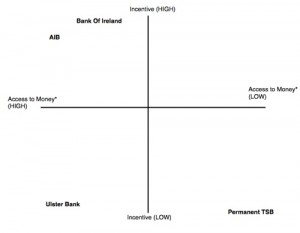Launching your first online store is an amazing experience.
But in spite of all the excitement, it is also a time when you get obsessed with so many things. There are all the technical things on one side. Your store design, shopping cart solution, payment process and more.
However, right in the middle of it is that you often easily forget about some of the most important things in business: research.
Sure, just like many newcomers in eBusiness, you may have gone to Amazon to compare prices. I am sure you also have your traffic and niche research done, the keywords you want to rank for and so on.
That’s far from what’s enough to build a sustainable business though. What about the market you want to operate in, your target audience, competition, your value proposition and so many other things that will help your store become a success?
Knowing of a typical eCommerce startup research limitations, I decided to compile a very concise guide to some of the most useful market research tools and show how they could be applied to a new business.
1. SWOT Analysis
SWOT Analysis is one of the most powerful business tools that you have available for you.
This analysis method allows you to take a full look at your business and establish the factors that have the most impact on its success.
SWOT Analysis allows you to look at internal (Strengths, Weaknesses) as well as external (Opportunities and Threats) aspects of your business.
Such knowledge allows you to quickly tell what elements of your business or the market place you should be leveraging today, which aspects of your business need to be improved and what you should pay attention to in the future.
The best way to perform a SWOT Analysis is by asking specific questions relating to each of it’s components.
Example questions could include:
Strengths:
- What are your assets?
- What is your strongest skill?
- What differentiates you from competition?
- Is your business debt free? Or are you personally debt free?
Weaknesses
- What expertise do you lack?
- In what areas your competitors might be better? (a positioning map tool described below can help you with answering this one.)
- Do you have a steady cash flow to keep the business afloat?
Opportunities
- What emerging trends might impact your industry or market?
- What aspect of the market your competitors are failing to service properly?
- Are there any new trends you could use to leverage your store?
- What external changes might present new opportunities?
Threats
- Is there a better equipped competitor on the market?
- Do you rely on 3rd parties on crucial aspects of running your store (development, design, customer service, delivery etc.)
- What new developments might affect your customers’ situation?
- What if your supplier runs out of their stock, do you have plan B?
Some of these questions are difficult to answer, I know. Many require you to take a look at those aspects of the market you wouldn’t like to know about (competitors and their marketing strategies and so on). Others might reveal what you didn’t know about yourself, or your idea but that exactly is the point of creating a SWOT Analysis.
2. Positioning Map
While SWOT Analysis focuses largely on your company and the market it is going to operate in, a positioning map allows you to look at your company in relation to its main competitors.
Although originally incepted as a tool to analyze products on the market, positioning map can also be used to establish the position of your business in the market place. To explain it in the simplest terms, a positioning map is a graphical research tool you can use to study and analyze the positions of each market competing company in respect to two specific product or market characteristics.
How does it work

Fig 1. Example positioning map
A position map is a graph that represents the strength or extent of the two product or market characteristics on x and y-axis.
Each end of the axis represents one level of a specific characteristic, usually high or low. For instance, if you want to measure your company against customer demand, one end of the axis would represent low demand, whereas the opposite on, a high demand.
The greatest strength of this method is that it allows you to classify your company versus your competitors in different position categories. By carefully plotting your business onto the map in relation to specific characteristics you can quickly identify what elements of your business you need to improve or take a closer look at in order to take on your competition.
Pawel Grabowski is the owner of thehappybike.com, a garage organization online store, writer, sales and marketing specialist as well as a publisher.








Love the SWOT approach. Most people do not take the time to plan at all. It can also be a great problem solving tool.